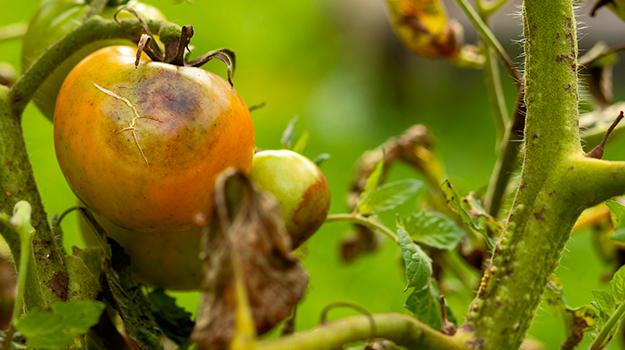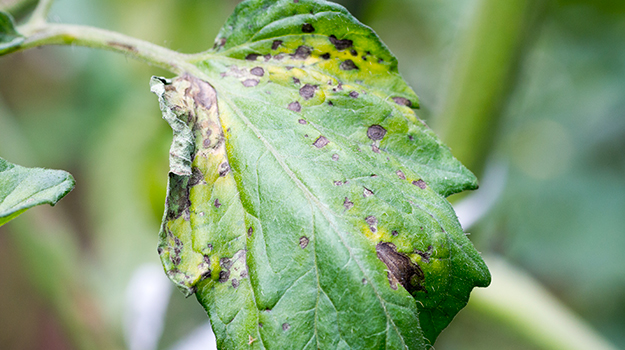This disease affects many plants, but more specifically trees, shrubs (mainly those that produce fruit), roses and some vegetable plants. It is caused by numerous fungi, which can make the disease difficult to identify. Once again, prevention remains the best way to fight this disease.
Contamination occurs when spores, which overwinter on dead leaves or in the soil, are spread by the wind. The fungi thrive primarily at temperatures between 15 and 27 °C, when humidity is high. Cold weather, heat waves and drought slow the progression of the disease.
Note that anthracnose rarely kills plants.
CAUTION: On roses, the disease could be confused with black spot disease, which is much more common.
How to identify anthracnose in tomatoes
Although it is a less common disease than those mentioned before, anthracnose can also affect tomatoes. At first glance, its symptoms can be confused with those of other diseases. Brown stains appear on the foliage, which dries up as if it had been damaged by the cold or burned by the sun.
Depending on the fungus causing the disease, the spots can also be irregular and appear on the edges of the leaves or along the veins. Spots that appear on tomatoes are often round and sunken, with a well-defined shape. Discolouration is noticed first, then the centre turns black.
How to prevent the disease in tomatoes
- Avoid excessive use of nitrogen fertilizers (high first number). They promote the development of vulnerable young shoots.
- Avoid wetting the foliage when watering. Cover the soil with mulch to protect your plants from the disease, which can survive for 2 years in the soil.
- Treat diseased plants with lime sulphur concentrate.
- Treat disease-sensitive trees and shrubs as a preventative measure in early spring, once all risk of frost has passed.
- Do not compost diseased plants or leaves.
- Do not reuse the potting soil from potted plants.
- Rotate crops (wait 3 years before planting tomatoes in the same spot).
- Watch for signs of the disease and promptly remove affected leaves and stems to prevent it from spreading.
- Regularly remove the dead leaves that have fallen at the base of plants and burn them or dispose of them if they are diseased.
GOOD TO KNOW : Unaffected fruits will be safe to eat. However, it is not recommended to harvest their seeds for planting the following year.


